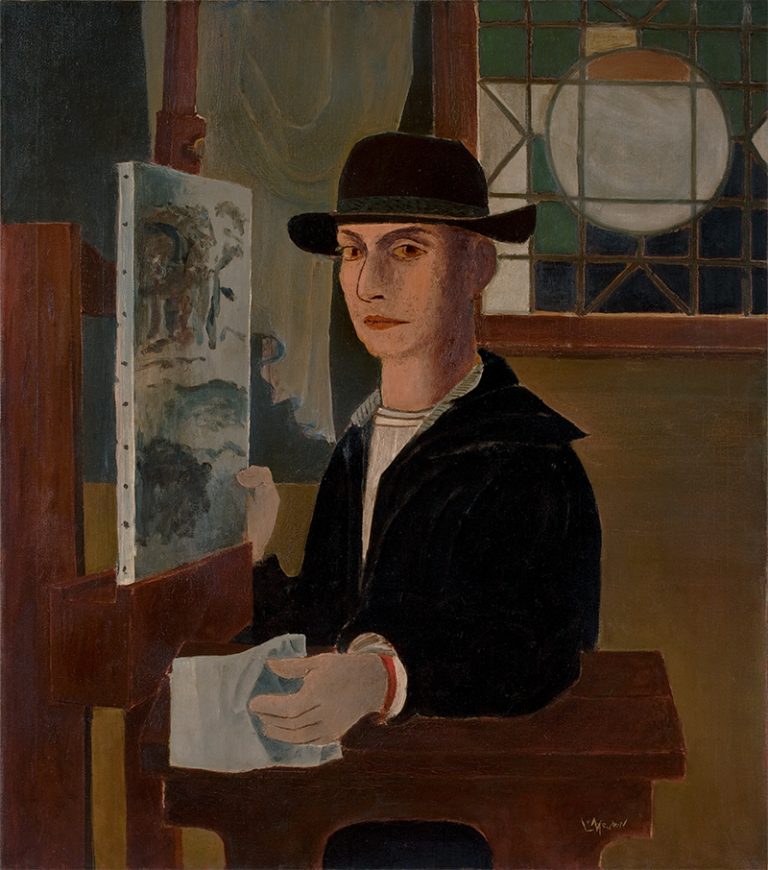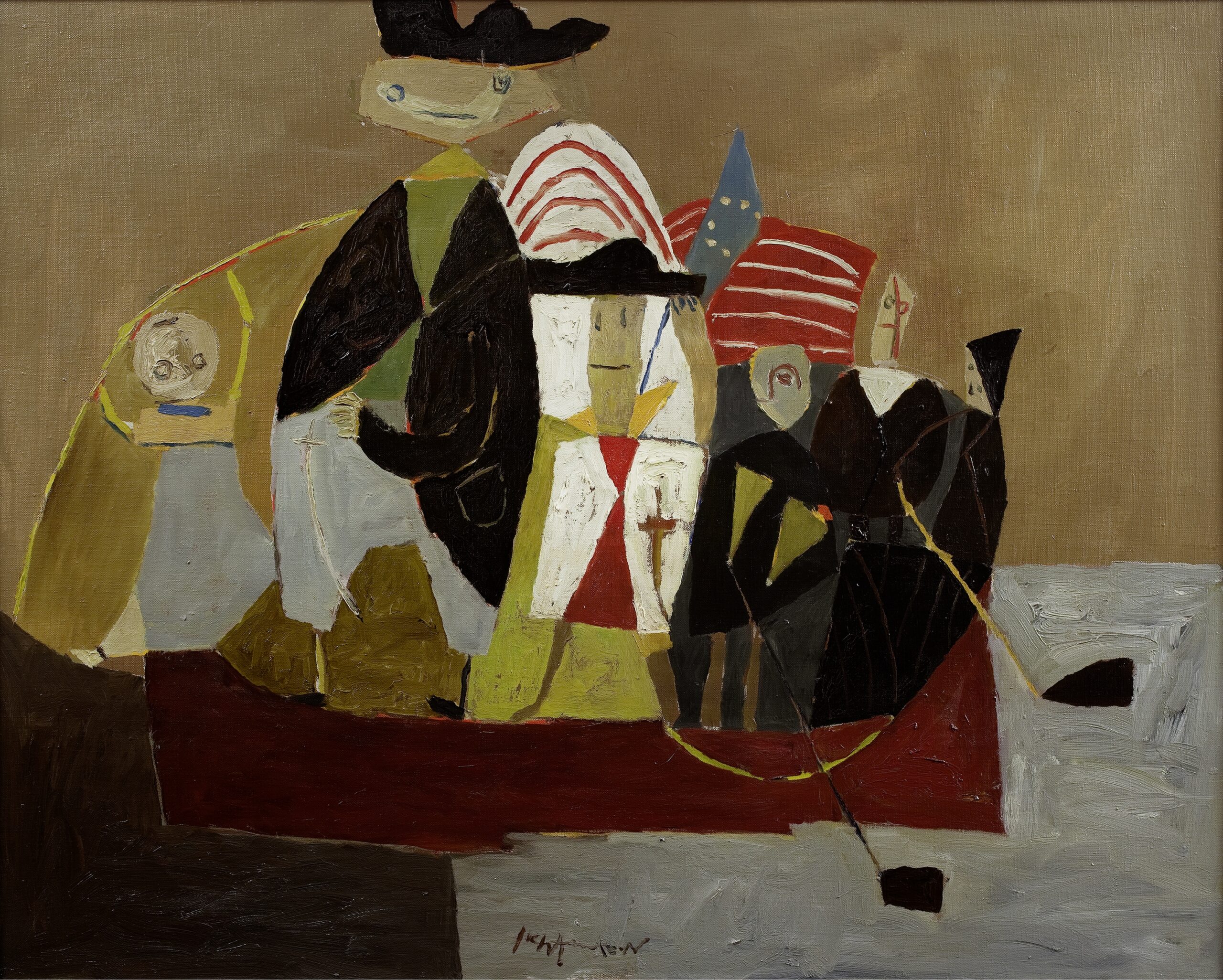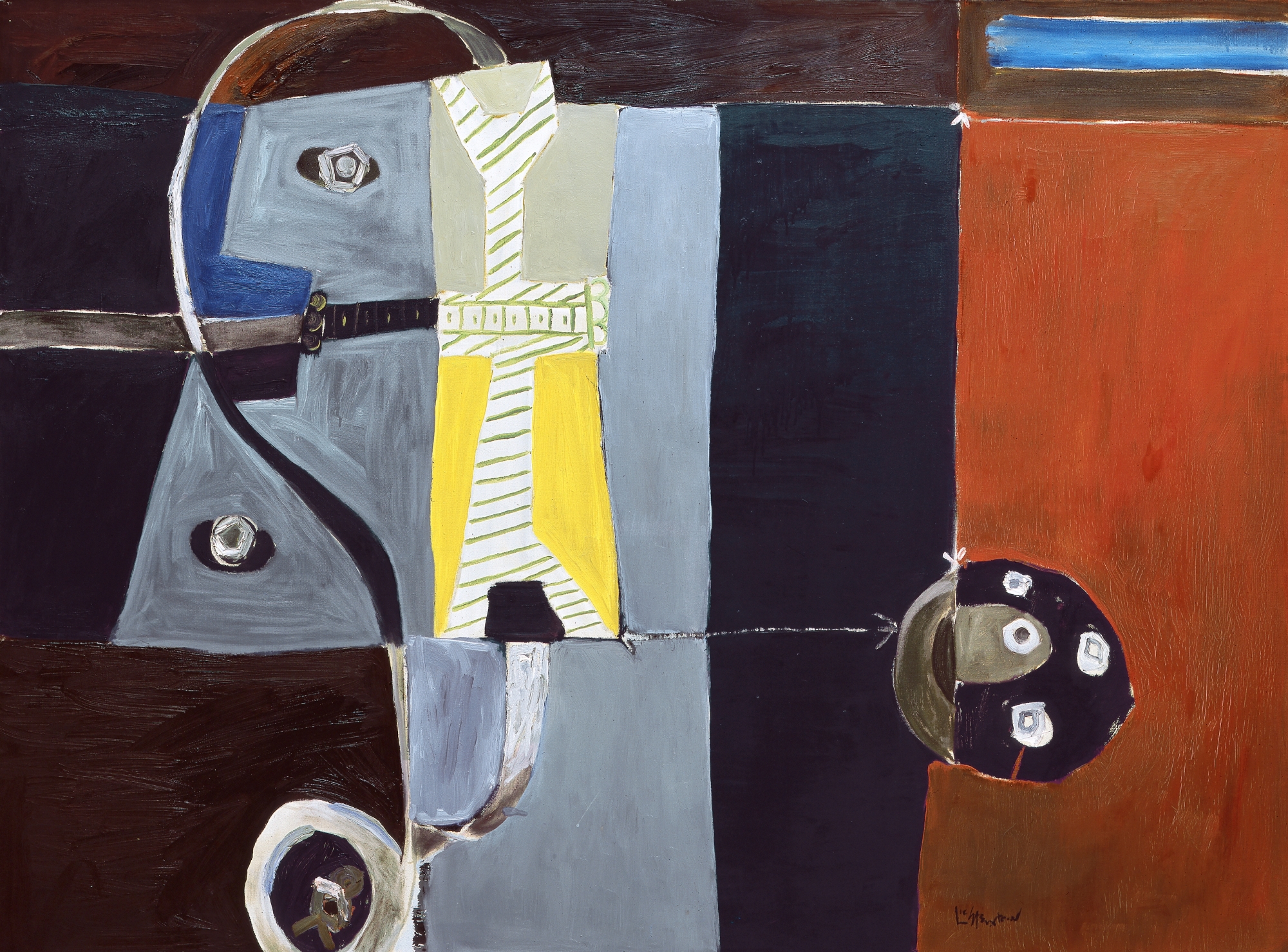Columbus Museum of Art, Columbus, Ohio
March 4, 2022–June 5, 2022
Nasher Museum of Art at Duke University, Durham, North Carolina
August 25, 2022–January 8, 2023
The first major museum exhibition to explore the early work of Roy Lichtenstein, one the most celebrated American artists of the 20th century, will be on view at the Columbus Museum of Art from March 4 through June 5, 2022.
Roy Lichtenstein, Self-Portrait at an Easel, c. 1951–1952. Oil on canvas, 34 1/16 x 30 1/8 inches (86.5 x 76.5 cm). Private collection. © 2021. Estate of Roy Lichtenstein.
Roy Lichtenstein: History in the Making, 1948–1960 offers an in-depth view of the artist’s years in Columbus, Ohio, and includes approximately 90 works on loan from public and private collections in a range of media. With many works on public view for the first time, this unprecedented exhibition demonstrates the formal invention and provocative nature of Lichtenstein’s early work.
“Many people know Roy Lichtenstein’s work but may not be aware of his formative years in Ohio. Until this exhibition, almost no one had really seen this work all together,” said Nannette Maciejunes, CMA executive director and CEO. “This region helped shape Lichtenstein’s towering achievements in American art, and the Columbus Museum of Art is a perfect place to share a more robust story of his development as an artist.
”
Roy Lichtenstein, Variations No. 7 1959. Oil on canvas, 48 x 60 inches (121.9 x 152.4 cm). Collection of the Whitney Museum of American Art, New York. The Roy Lichtenstein Study Collection; gift of the Roy Lichtenstein Foundation, 2019.277.
© Estate of Roy Lichtenstein.
Born in New York City in 1923, Lichtenstein went on to enroll in and teach at The Ohio State University, where the progressive curriculum and a focus on visual perception influenced his irreverent response to American history and culture. The artist’s studies were interrupted when he served in the Army during World War II, an experience that also allowed him to see a wealth of European art in person. After he returned to Ohio, Lichtenstein quickly synthesized modern art styles to create an innovative and personalized body of work. By the early 1950s Lichtenstein was exhibiting regularly in New York and began to receive critical attention.
Roy Lichtenstein, Washington Crossing the Delaware II, 1951. Oil on canvas. The Roy Lichtenstein Foundation Collection, New York. ⓒ Estate of Roy Lichtenstein
Roy Lichtenstein, Mechanism, Cross Section, c. 1954. Oil with sgraffito on canvas. Collection of the Flint Institute of Arts, Michigan. Gift of Messrs. Samuel N. Tomkin and Sidney Freedman, FIA 1956.2. ⓒ Estate of Roy Lichtenstein
Before 1960, Lichtenstein’s art was filled with characteristic humor and evoked many of the themes that would become synonymous with his later career. He borrowed from earlier styles and displayed an avid interest in popular culture, including fairy tales, caricature, folk art and children’s art. He also drew upon various forms of Americana, such as 19th-century paintings of the Great Plains, as well as the cartoon characters Bugs Bunny, Donald Duck and Mickey Mouse. These and other vernacular inspirations are the essential but little-known precursors to the artist’s later appropriations of popular culture associated with the Pop Art movement of the 1960s from comic books, advertisements and newspapers.

Diver, c. 1948–49. Pastel on colored paper. 14 3/4 x 13 in. (37.5 x 33 cm). Collection of Joan Thomas. © Estate of Roy Lichtenstein
The exhibition also tells the story of Lichtenstein’s brief but instrumental flirtation with abstraction in 1959 and 1960. Coinciding with the broader acceptance of Abstract Expressionism, these paintings illustrate how the artist was inspired to engage with the movement’s pervasive influence, but not without inserting his characteristic humor and wit.
“Lichtenstein’s work is often poised between irony and admiration,” said Tyler Cann, CMA’s acting chief curator, who is overseeing the exhibition in Columbus. “This exhibition will present a new Roy Lichtenstein for many visitors, and it is fascinating to see that the elements of his later work are all there.”
Catalogue
Author Elizabeth Finch and Marshall N. Price and Graham Bader and Scott Manning Stevens
- Publish Date: September 08, 2020
- Format: Hardcover
- Category: Art - Individual Artists - Monographs
- Publisher: Rizzoli Electa
- Trim Size: 8-1/4 x 11-1/2
- Pages: 224
- US Price: $55.00
- CDN Price: $75.00
- ISBN: 978-0-8478-6868-1
.
Roy Lichtenstein: History in the Making, 1948–1960 is co-organized by the Colby College Museum of Art, Waterville, Maine, and the Nasher Museum of Art at Duke University, Durham, North Carolina. The exhibition is co-curated by Elizabeth Finch, Lunder chief curator at the Colby Museum and Marshall N. Price, chief curator and Nancy A. Nasher and David J. Haemisegger curator of modern and contemporary art at the Nasher Museum. Support for this exhibition and its national tour is provided by the Roy Lichtenstein Foundation. This project is supported in part by the National Endowment for the Arts. Additional catalogue support is provided by the Wyeth Foundation for American Art.




